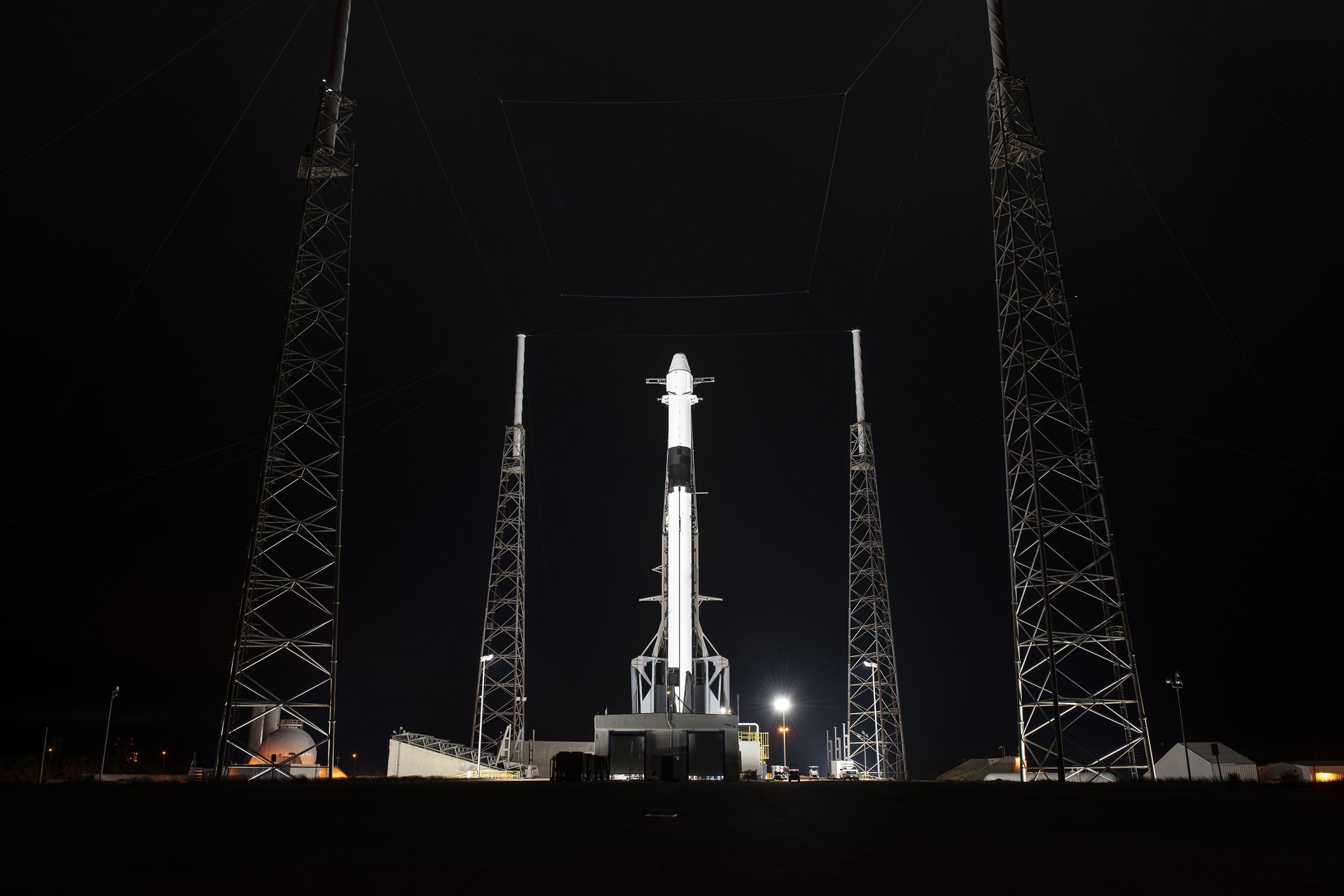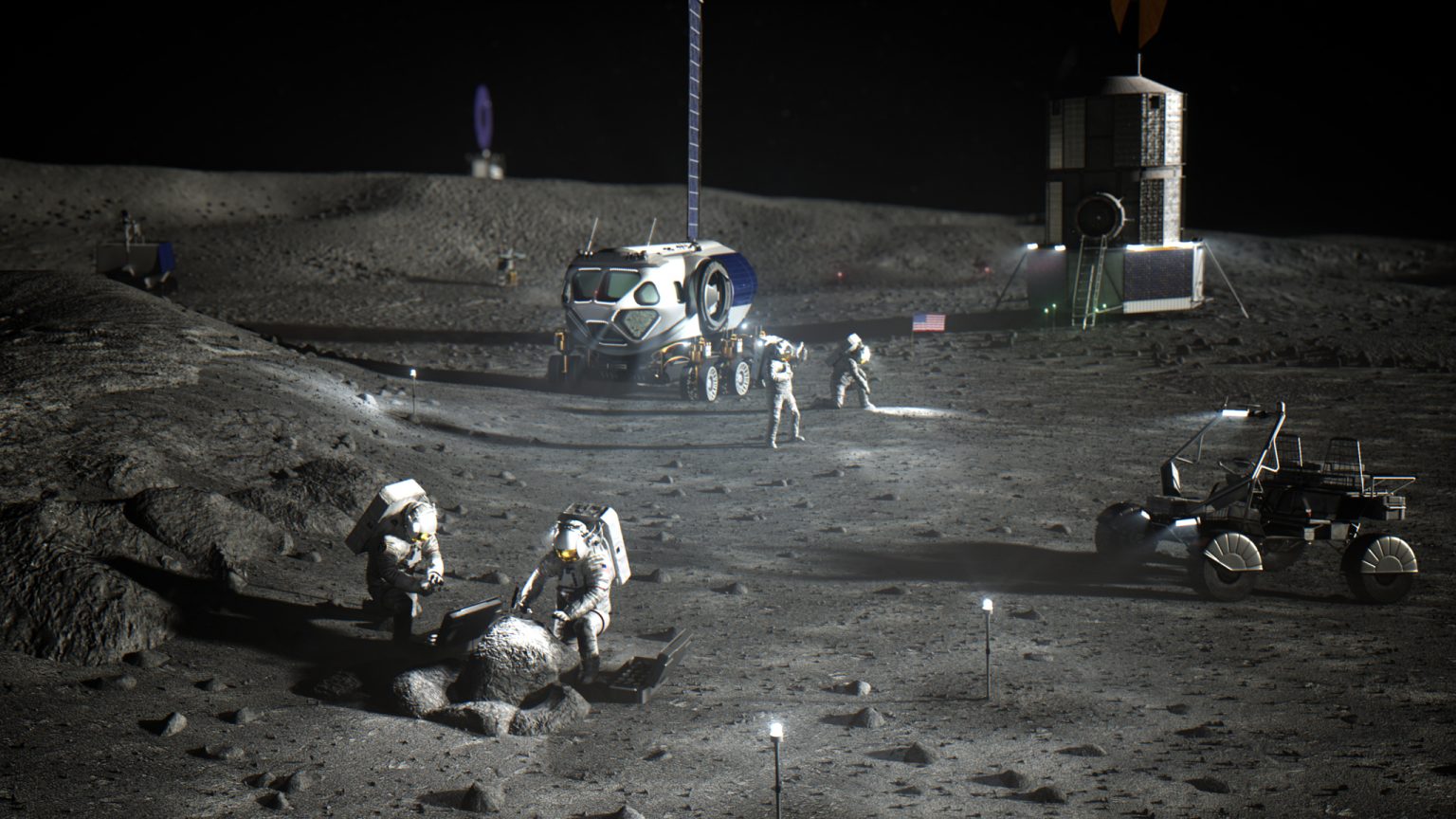SpaceX will launch 58 Starlink satellites, 3 Planet SkySats Saturday. Here's how to watch.
Liftoff is at 5:21 a.m. EDT (0921 GMT).

CAPE CANAVERAL, Fla. — The private spaceflight company SpaceX will launch 58 new Starlink satellites to join its ever-growing broadband internet megaconstellation in orbit Saturday (June 13), and you can watch it live online.
A SpaceX Falcon 9 rocket will launch the Starlink mission from Space Launch Complex 40 at Cape Canaveral Air Force Station in Florida. Liftoff is scheduled for no earlier than 5:21 a.m. EDT (0921 GMT).
You can watch SpaceX's Starlink launch webcast here and on the Space.com homepage, courtesy of SpaceX, beginning about 15 minutes before liftoff. You'll also be able to watch the launch directly from SpaceX here.
Related: SpaceX's Starlink satellite megaconstellation launches in photos
This is SpaceX's ninth launch of the year and the ninth Starlink launch to date. SpaceX is keeping up a busy launch cadence as June is shaping up to be a four launch month. SpaceX kicked off this rapid pace with the launch of two NASA astronauts — Doug Hurley and Bob Behnken — on May 30, followed by a Starlink launch four days later on June 3. Now, with just over a week since its last launch, SpaceX will loft another batch of its internet-beaming satellites into space.
But this time, the payload will contain other passengers. As part of a rideshare agreement with the Earth-imaging company Planet, SpaceX will launch three small SkySat satellites for the California-based imaging company — a first for the Starlink program.
The rideshare means that SpaceX will only be able to launch 58 of its Starlink satellites, as opposed to the traditional 60, leaving room for Planet to hop on board. This is not SpaceX's first rideshare mission, but the first time its Starlink satellite stack will share fairing space with another customer.
Breaking space news, the latest updates on rocket launches, skywatching events and more!
But it won’t be the last. Planet has booked room on the next Starlink mission for another three SkySats as well.
Related: Astronomers, SpaceX working to make Starlink less disruptive to science
The booster supporting this mission previously launched Dragon’s 19th and 20th resupply missions to the @space_station pic.twitter.com/D0O5vMvF0GJune 11, 2020
The upcoming SpaceX launch will star a veteran Falcon 9 rocket that already has two missions under its belt. The booster, designated B1059 by SpaceX, previously launched two science missions to the International Space Station — CRS-19 in December 2019, and CRS-20 in March of this year.
Flying previously flown boosters has become commonplace for SpaceX, but this launch will be a bit unusual. For the first time, the company will not fire up the rocket as part of preflight testing. This type of test is a routine practice for the company and involves fueling and briefly firing the rocket’s nine engines while it is held down on the pad.
SpaceX is both the launch provider as well as the customer for its Starlink missions, and its fleet of flight proven boosters have proven to be reliable rockets. In fact, the Falcon 9 recently earned the title of most-flown American rocket this year — a title that was previously held by the Atlas V.
To date, the Falcon 9 has proven that the same booster can launch and land five times, as witnessed during the previous Starlink launch on June 3. That booster recently returned to port, atop SpaceX's former West Coast-based drone ship, “Just Read the Instructions”. That ship was moved to the Cape and received some sweet upgrades prior to entering service on the Starlink 7 mission.
Now that SpaceX has two fully operational drone ships, the company is able to launch more rockets. The original East Coast ship, "Of Course I Still Love You," is already at the recovery zone, waiting for its turn to catch B1059, when it returns to Earth on Saturday.
Related: Why SpaceX's Starlink satellites caught astronomers off guard
The goal of SpaceX's Starlink project is to provide users around the world with constant, high-speed internet access. The company plans to achieve that by launching a massive constellation of broadband internet satellites.
Users on the ground would then operate a small terminal — no bigger than a laptop — to gain internet access.
As evident by the launches so far this year, the majority of SpaceX's missions in 2020 will consist of sending Starlink satellites into space. This is the eighth Starlink launch of the year, which brings the company’s fleet of internet-beaming satellites to approximately 500.
SpaceX CEO and founder Elon Musk has previously stated that the company will need at least 400 Starlink satellites in orbit to offer "minor" broadband coverage, and at least 800 to provide "moderate" coverage. With this launch, they are more than halfway to that moderate coverage goal.
The weather on Saturday is looking promising, with only a 30% chance of weather violation, according to forecasters at the 45th Weather Squadron. Temperatures in the area are supposed to be around 70 degrees with a few scattered clouds.
Related: SpaceX's Starlink satellites surprise British skywatchers
In addition to a planned booster recovery, SpaceX has already deployed its two fairing-catching ships: GO Ms. Tree and GO Ms. Chief in hopes of snagging the payload fairings as they fall back to Earth. The previous recovery attempt was thwarted by rough seas at the recovery zone; the ships were able to bring one fairing piece back intact, the other broke apart as it landed in the ocean.
But SpaceX will try again. The company aims to cut down on launch costs by recovering more pieces of its rockets. Currently the company has successfully recovered 53 first stage boosters and GO Ms. Tree has made three successful fairing catches. With any luck, the company will see its first double catch Saturday.
Visit Space.com Saturday for complete coverage of SpaceX's Starlink launch.
- SpaceX's Starlink constellation could swell by 30,000 more satellites
- SpaceX's Starlink broadband service will begin in 2020: report
- 'Whoa, it worked': Elon Musk tweets via SpaceX's Starlink satellites
Follow Amy Thompson on Twitter @astrogingersnap. Follow us on Twitter @Spacedotcom or Facebook.
OFFER: Save 45% on 'All About Space' 'How it Works' and 'All About History'!
For a limited time, you can take out a digital subscription to any of our best-selling science magazines for just $2.38 per month, or 45% off the standard price for the first three months.

Amy Thompson is a Florida-based space and science journalist, who joined Space.com as a contributing writer in 2015. She's passionate about all things space and is a huge science and science-fiction geek. Star Wars is her favorite fandom, with that sassy little droid, R2D2 being her favorite. She studied science at the University of Florida, earning a degree in microbiology. Her work has also been published in Newsweek, VICE, Smithsonian, and many more. Now she chases rockets, writing about launches, commercial space, space station science, and everything in between.

